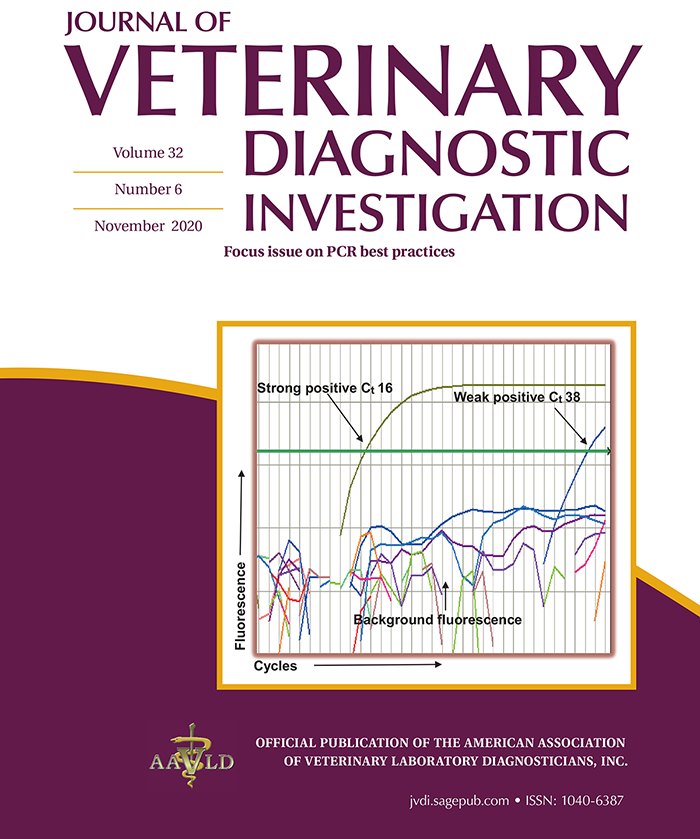Ver ítem
- xmlui.general.dspace_homeCentros e Institutos de InvestigaciónCICVyA. Centro de Investigación en Ciencias Veterinarias y AgronómicasInstituto de VirologíaArtículos científicosxmlui.ArtifactBrowser.ItemViewer.trail
- Inicio
- Centros e Institutos de Investigación
- CICVyA. Centro de Investigación en Ciencias Veterinarias y Agronómicas
- Instituto de Virología
- Artículos científicos
- Ver ítem
Analysis of irradiated Argentinean fetal bovine serum for adventitious agents
Resumen
Fetal bovine serum (FBS) used in cell culture may be contaminated with adventitious agents, which can affect the production of biologicals and the results of clinical laboratory tests. We carried out a retrospective study to determine the incidence of adventitious agent contamination of Argentinean irradiated FBS dating from 2015 to 2019. We analyzed FBS batches for mycoplasma and adventitious viruses (bovine pestiviruses, bovine adenovirus, bluetongue
[ver mas...]
Fetal bovine serum (FBS) used in cell culture may be contaminated with adventitious agents, which can affect the production of biologicals and the results of clinical laboratory tests. We carried out a retrospective study to determine the incidence of adventitious agent contamination of Argentinean irradiated FBS dating from 2015 to 2019. We analyzed FBS batches for mycoplasma and adventitious viruses (bovine pestiviruses, bovine adenovirus, bluetongue virus, bovine parainfluenza virus 3, rabies virus, bovine parvovirus, bovine herpesvirus 1, bovine respiratory syncytial virus, and reovirus). Cell passages followed by direct immunofluorescence were carried out to check viability of the mentioned adventitious agents. Also, molecular detection of mycoplasma and pestiviruses was performed on the FBS samples. The presence of neutralizing antibodies against pestiviruses was determined. Molecular analyses indicated that frequencies of mycoplasma and pestiviruses in FBS were 14% and 84%, respectively. All of the batches were seronegative for pestiviral antibodies. After cell passages, all FBS samples were negative for hemadsorbent agents and by immunofluorescence for all of the viral species analyzed; PCR assays were negative for mycoplasma and pestiviruses. Our results demonstrate that, of all adventitious agents tested, local FBS batches only had traces of mycoplasma and pestiviruses; gamma irradiation was effective in inactivating them.
[Cerrar]

Fuente
Journal of Veterinary Diagnostic Investigation 32 (6) : 892–897 (Noviembre 2020)
Fecha
2020-11
Editorial
Sage Publications
ISSN
1943-4936
Documentos Relacionados
Formato
pdf
Tipo de documento
artículo
Proyectos
(ver más)
INTA/PNSA-1115052/AR./Epidemiología y desarrollo de estrategias para la prevención y control de enfermedades que afectan la salud pública, enfermedades exóticas y limitantes del comercio internacional.
Palabras Claves
Derechos de acceso
Restringido
 Excepto donde se diga explicitamente, este item se publica bajo la siguiente descripción: Creative Commons Attribution-NonCommercial-ShareAlike 2.5 Unported (CC BY-NC-SA 2.5)
Excepto donde se diga explicitamente, este item se publica bajo la siguiente descripción: Creative Commons Attribution-NonCommercial-ShareAlike 2.5 Unported (CC BY-NC-SA 2.5)

